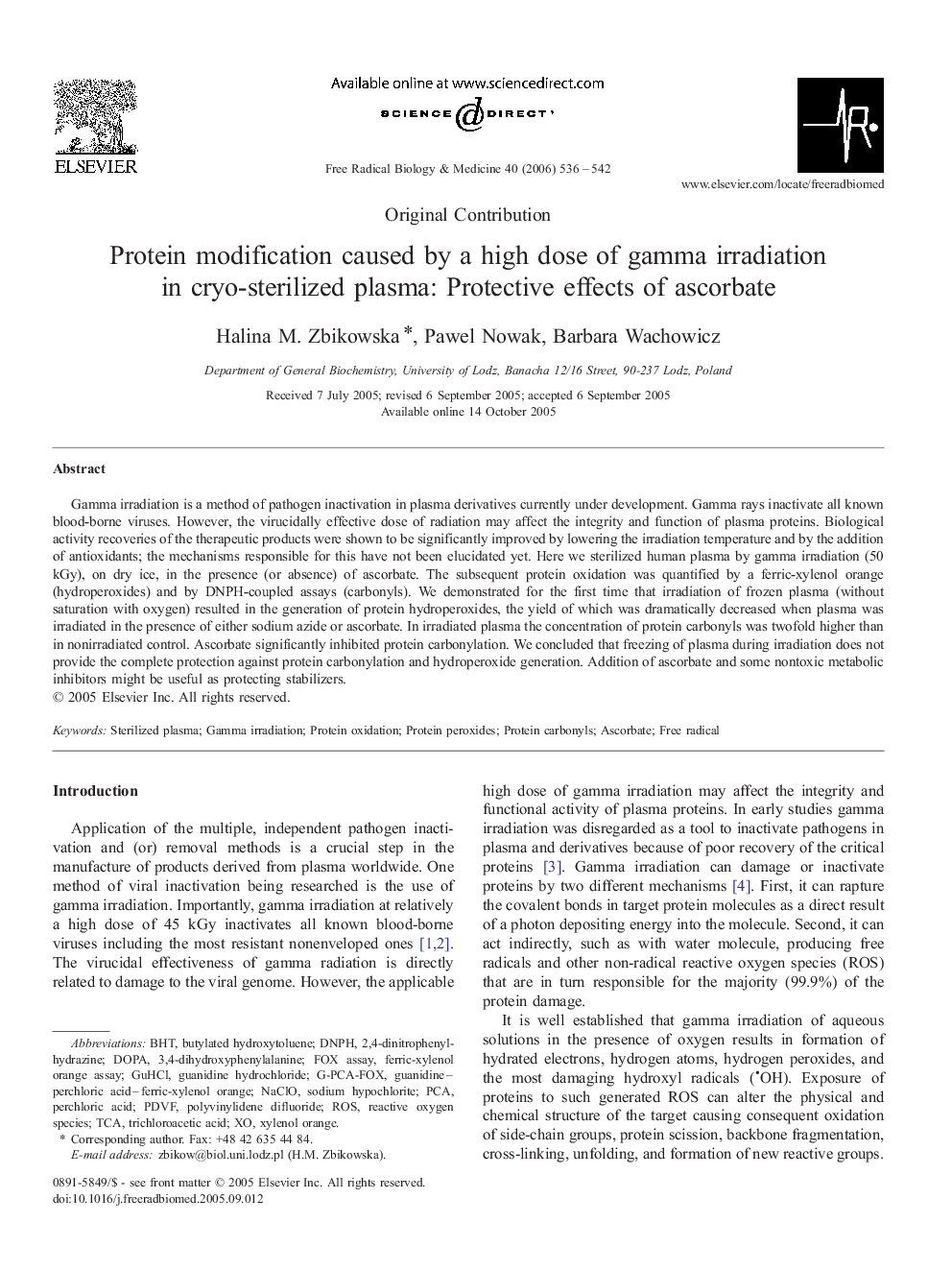| Article ID | Journal | Published Year | Pages | File Type |
|---|---|---|---|---|
| 1912027 | Free Radical Biology and Medicine | 2006 | 7 Pages |
Gamma irradiation is a method of pathogen inactivation in plasma derivatives currently under development. Gamma rays inactivate all known blood-borne viruses. However, the virucidally effective dose of radiation may affect the integrity and function of plasma proteins. Biological activity recoveries of the therapeutic products were shown to be significantly improved by lowering the irradiation temperature and by the addition of antioxidants; the mechanisms responsible for this have not been elucidated yet. Here we sterilized human plasma by gamma irradiation (50 kGy), on dry ice, in the presence (or absence) of ascorbate. The subsequent protein oxidation was quantified by a ferric-xylenol orange (hydroperoxides) and by DNPH-coupled assays (carbonyls). We demonstrated for the first time that irradiation of frozen plasma (without saturation with oxygen) resulted in the generation of protein hydroperoxides, the yield of which was dramatically decreased when plasma was irradiated in the presence of either sodium azide or ascorbate. In irradiated plasma the concentration of protein carbonyls was twofold higher than in nonirradiated control. Ascorbate significantly inhibited protein carbonylation. We concluded that freezing of plasma during irradiation does not provide the complete protection against protein carbonylation and hydroperoxide generation. Addition of ascorbate and some nontoxic metabolic inhibitors might be useful as protecting stabilizers.
